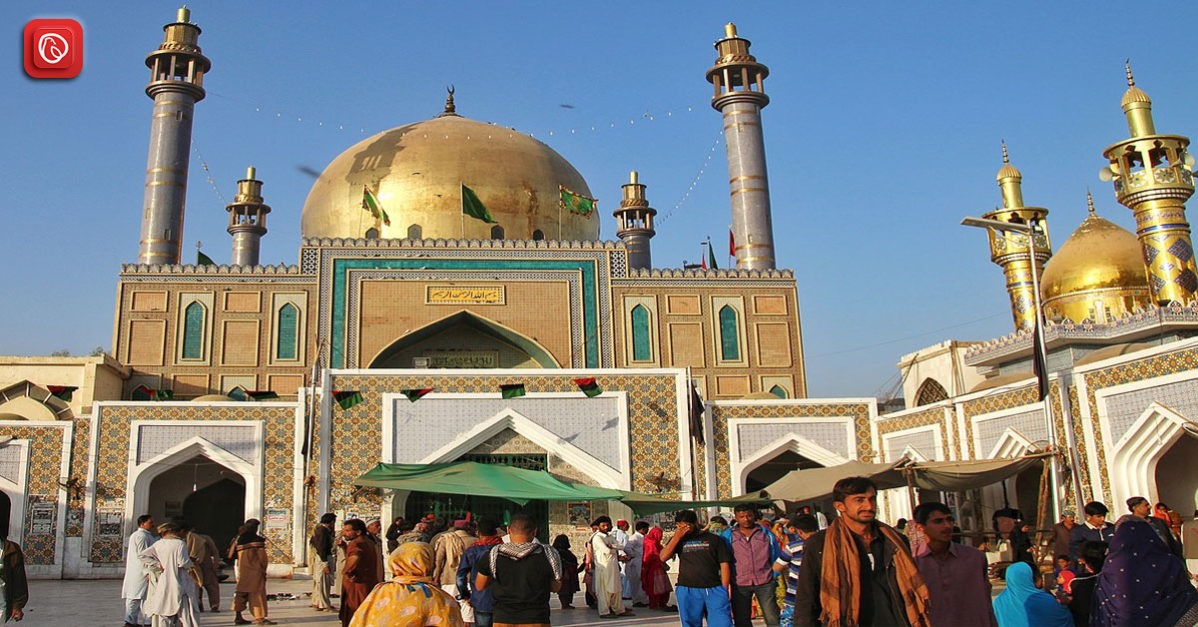
The Pakistani province of Sindh contains the historic and aristocratic city of Sehwan Sharif, located in the Jamshoro District. The city is located, on the west bank of the Indus River, approximately 130 kilometres northwest of Hyderabad, is critical because of its Sufi connection. One of Pakistan’s most revered Sufi shrines, the Shrine of Lal Shahbaz Qalandar, is the crown jewel of Sehwan Sharif. Sehwan Sharif is a well-known pilgrimage site because it is home to this shrine devoted to the Sufi saint Lal Shahbaz Qalandar, who lived in the 13th century and draws thousands of pilgrims and tourists each year. Graana. Com provides you with a thorough tour of the city of Sehwan in this blog.
Sehwan Sharif, popularly referred to as Sehwan, has a profound spiritual importance and a long history. This city, about 80 miles (130 km) northwest of Hyderabad, is situated on the west bank of the Indus River in the Jamshoro District of Sindh province, Pakistan.
Here’s a closer look at Sehwan Sharif’s location:
Sehwan Sharif is currently a part of the Jamshoro District, even if the data presented shows the Matiyari District. It is famous for its location of the hallowed Shrine of Lal Shahbaz Qalandar, a 13th-century Sufi saint. This shrine attracts a multitude of pilgrims and visitors each year, reinforcing its standing as a prominent pilgrimage site.
Even though Sehwan Sharif lacks a regularly scheduled airport, there are still ways to get to this ancient city. Below is a summary of your choices:
During the Urs festival, which honours Lal Shahbaz Qalandar’s death anniversary, Sehwan Sharif comes to life. For the three-day celebration, Pakistan International Airlines runs extra daily flights between Karachi and Sehwan Sharif.
Sehwan has a single train station where two trains arrive and depart twice a day:
This train from Karachi to Peshawar only runs in economy class.
In addition to being a significant historical city, Sehwan Sharif, usually called Sehwan, is a well-known spiritual hub in Pakistan. Consider it, along with other hallowed temples such as one of the nation’s priceless jewels.
This spiritual city is located approximately 80 miles (130 km) northwest of Hyderabad, in the Jamshoro District of Sindh province. It is situated on the west bank of the Indus River.
The city’s renown originates from housing the hallowed Shrine of 13th-century Sufi saint Lal Shahbaz Qalandar. Many pilgrims and tourists visit this shrine annually, confirming Sehwan Sharif’s standing as an essential spiritual hub.
The city was formerly a part of the Dadu District but was later connected to the newly formed Jamshoro District.
For Sufis and saint enthusiasts, the Shrine of Lal Shahbaz Qalandar at Sehwan Sharif, Pakistan, is an important place of pilgrimage. The temple dates back to the fourteenth century and welcomes hundreds of thousands of tourists annually.
The biggest assembly occurs during the Urs celebrations, which take place on the 18th of Shaban in the Islamic lunar calendar. During these three days, more than 500,000 pilgrims from Pakistan converge on Sehwan Sharif, turning it into a bustling metropolis.
A fascinating feature of the Urs is the traditional Sufi dance known as the dhamal. Participants spiral and swing rhythmically to the beat of drums, entering a spiritual trance.
There is more to Sehwan Sharif than merely the shrine. A spiritual descendant of Lal Shahbaz Qalandar, the adjacent Shrine of Murshid Nadir Ali Shah upholds the hospitality tradition by feeding guests for free. The city is close to several historical locations, including the “inverted city” and Manchar Lake, Pakistan’s largest freshwater lake, which present options for additional study.
The city’s economy thrives on a diversified combination of traditional and contemporary income sources. Below is a summary of its main economic drivers:
Sehwan Sharif has a rich history, albeit its beginnings are lost in the mists of time. Here is a peek at some of the theories that surround its origins and name:
Located in Sehwan, Sindh, Pakistan, Sehwan Fort, also called Kafir Qila (Fort of the Infidels), is a formidable structure. This massive, enigmatic building has spurred decades of discussion on its origins.
According to local legend, Alexander the Great himself constructed the fort, which is also known as “Alexander’s Fort in Sehwan.” The fort’s colossal brickwork is reminiscent of the Kalankot Fort in Thatta, further supporting this notion.
The defensive configuration provides further hints. The roughly rectangular walls with machicolations—openings where items could be dropped on attackers—were built for maximum defence. Modern buildings now stand atop the fortification ground area. However, the original design most likely had military utility as its primary goal.
Following are the FAQs.
Shrine of Lal Shahbaz Qalandar, a revered Sufi saint attracting pilgrims year-round.
Jamshoro District, Sindh province, Pakistan. Eighty miles northwest of Hyderabad.
Ancient past, possibly pre-Islamic. Sehwan Fort reflects its rich past.
Visit the shrine, explore Sehwan Fort, experience local culture, and relax at Manchar Lake.
It is easily accessible by road (Indus Highway). Limited flights are available during the Urs festival. Trains and buses are also available.
For more information, visit Graana.com.
Members of the National and Punjab Assemblies have lauded the provincial government’s plan to introduce…
ISLAMABAD: The Capital Development Authority (CDA) has recorded a historic development expenditure of Rs25 billion…
ISLAMABAD: The federal government is set to inaugurate the Islamabad Information Technology Park on August…
Lahore, April 23, 2025 – The city of Lahore has successfully completed the construction of…
ISLAMABAD, Pakistan – April 23, 2025 – Chaaye Khana, Pakistan's popular cafe renowned for its…
ISLAMABAD: Prime Minister Shehbaz Sharif laid the foundation stone for the Murree Road underpass on…